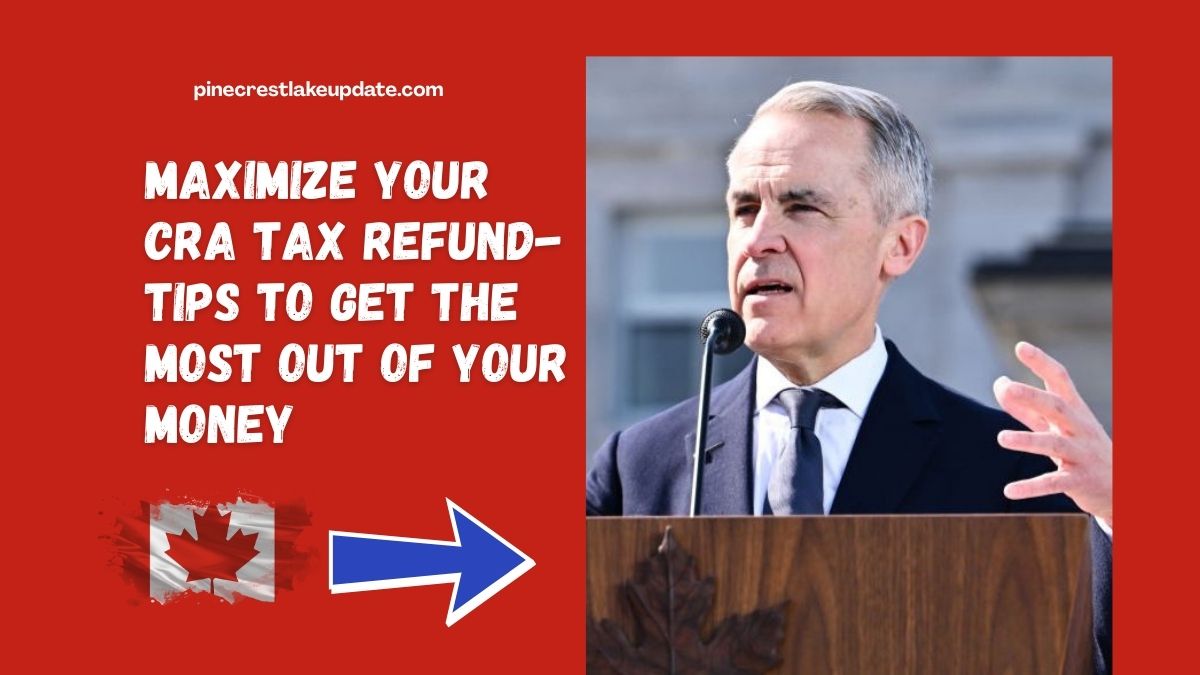Receiving a tax refund from the Canada Revenue Agency (CRA) can feel like a windfall, but it’s important to remember that this money was originally yours.
According to Ameer Abdulla, a tax partner at EY Canada, a tax refund is similar to the change you get after making a purchase at the store—it’s just money you’ve already earned, and now you’re simply receiving it back.
While many people treat a tax refund as a bonus, it is essential to think strategically about how to manage this money. Given the current market volatility and economic uncertainty, having a plan for your refund can be more beneficial than using it on impulsive purchases.
Average Tax Refund in Canada
The CRA issues tax refunds when the taxes paid throughout the year exceed the total amount owed after considering all deductions and credits. According to CRA data, for the 2023 tax year, over 33 million tax returns were filed, and more than 19 million refunds were issued.
The average refund for 2023 was approximately $2,294. For the 2022 tax year, about 32 million returns were filed, with 18 million refunds issued, and an average refund of $2,262.
If you owe taxes, the CRA data for the 2025 tax season indicates that around 18% of returns had a balance due, with an average amount owed of around $5,000.
How Should You Use Your Tax Refund?
Although it’s tempting to treat your refund like “free money,” financial experts recommend using it wisely. Prioritizing debt repayment or investing according to your financial plan is a smarter choice.
Paying Off Debt
If you have high-interest debt, like credit card debt, it’s often recommended to use your refund to pay it off first. For instance, if you have credit card debt with an interest rate of 19%, a car loan at 12%, and a mortgage at 5%, prioritizing the credit card debt would offer the highest return on investment.
Ameer Abdulla advises using the “biggest number” rule, focusing on paying off the debt that carries the highest interest rate first. This approach maximizes your net worth over time.
| Debt Type | Interest Rate | Priority for Refund Use |
|---|---|---|
| Credit Card Debt | 19% | First |
| Car Loan | 12% | Second |
| Mortgage | 5% | Last |
Investing Your Refund
If you’re debt-free and wish to invest your refund, there are several options to consider, including FHSA, TFSA, and RRSP.
First Home Savings Account (FHSA)
If you’re looking to purchase your first home, contributing to an FHSA may be a good option. The FHSA allows you to save for a home, and contributions are limited to $8,000 per year with carry-forward options. If you’ve been a first-time homebuyer for more than five years, this could be the best option for you.
Tax-Free Savings Account (TFSA)
For younger individuals or those who don’t need immediate tax deductions, contributing to a TFSA can be highly advantageous. TFSAs offer tax-free growth on your contributions, and withdrawals are also tax-free.
Registered Retirement Savings Plan (RRSP)
For those in their prime earning years, contributing to an RRSP can provide significant tax deductions, reducing your taxable income. If you are earning a higher income, contributing to an RRSP is often a powerful way to save for retirement while lowering your tax liability.
Building an Emergency Fund
Given the ongoing economic uncertainty, having easy access to cash can provide a safety net in case of unexpected events. A good financial strategy involves maintaining an emergency fund.
Tannis Dawson, a high-net-worth planner at TD Wealth, advises keeping money in a TFSA rather than a First Home Savings Account (FHSA), as the TFSA offers more flexibility and liquidity. TFSAs allow you to withdraw funds without losing your contribution room, which can be crucial if you need access to cash quickly.
Choosing the Right Investment Vehicle
When deciding where to allocate your tax refund, consider factors such as interest rates, investment return potential, and liquidity needs. Whether you choose to pay down debt or invest, a thoughtful strategy will help you maximize the long-term benefits of your refund.
A tax refund isn’t a windfall—it’s your money returning to you. Instead of treating it as “free money,” use it to either pay down debt, invest for future growth, or build an emergency fund.
Depending on your financial situation, choosing between TFSAs, RRSPs, and FHSA will allow you to maximize the benefit of your refund. Always be mindful of your financial goals and the economic landscape when deciding how best to utilize this refund.
FAQs
How much is the average tax refund in Canada?
The average refund for the 2023 tax year was approximately $2,294, according to the CRA.
What is the best use for my tax refund?
If you have high-interest debt, using your refund to pay off debt should be a priority. If you’re debt-free, consider investing in TFSAs, RRSPs, or contributing to a First Home Savings Account (FHSA).
What should I do if I need cash quickly?
For those needing easy access to funds, consider using a TFSA for its liquidity and tax-free growth options. It offers flexibility compared to other savings plans.

